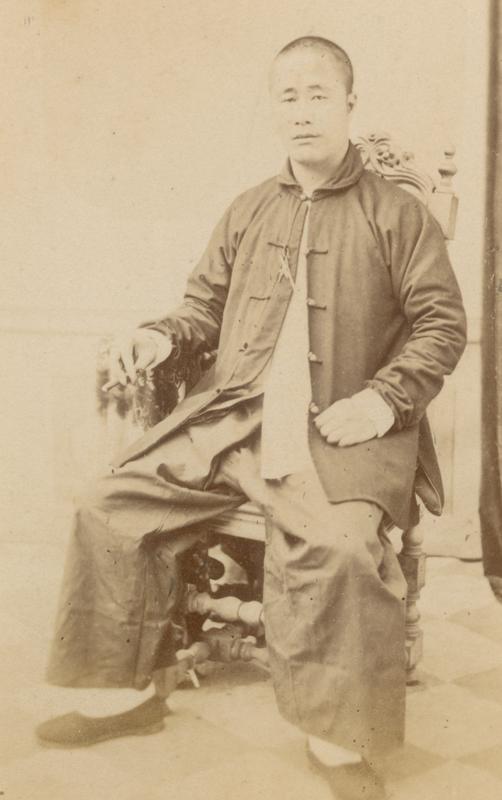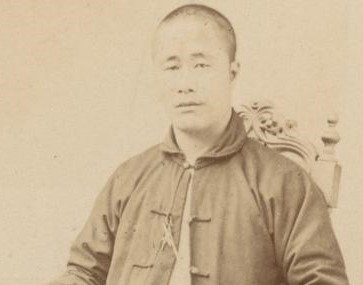Tag: Kleding Nederlands Indië Chinese community gemeenschap Dutch Indies Attire
23 – Attire of the Chinese Community in the Dutch East Indies – 2/10
Java, 1870 KITLV 100948. See whole image below
In mid-19th century, Chinese men wore collarless Chinese-style shirts (“baju tui khim”) with baggy pants (“celana komprang”).
An outer jacket was sometimes worn with the frog-buttons unbuttoned. Those with greater economic power often replaced the fabric buttons with those made of precious metals.
Chinese officials appointed by the colonial government had outer jackets with collars. European elements, such as club collars or notched lapels, were often used as symbols of rank and status. The wearing of European accessories, such as pocket watches, also became increasingly common in the late 19th century.
The desire of having European elements also reflected other motives: it could be an aspiration to be part of a world of progressive ideas or simply a matter of individual taste.
November 2020
Christopher Ng

This article is part of a series of 10 articles. A new article will be published on the 1st day of each month from October 2020 to July 2021. The bibliography of the series can be found here.



